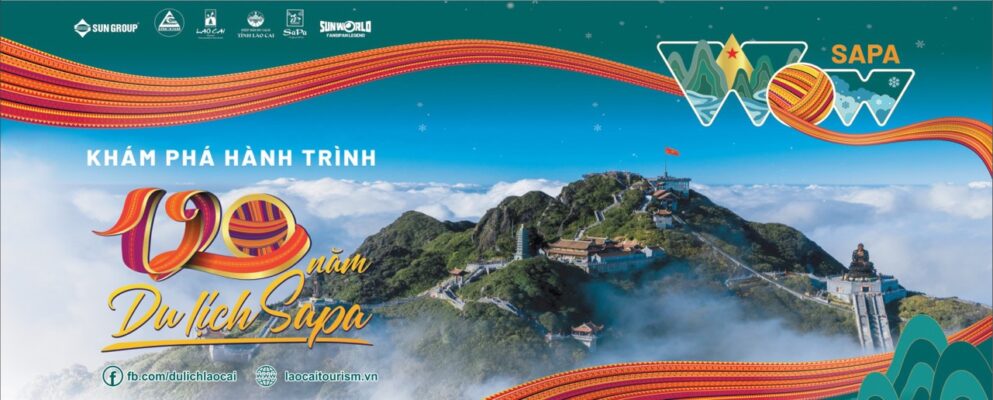- You are here:
- Home »
- About Sapa »
- The History Of Formation And Development Of Sapa National Tourist Site

The History Of Formation And Development Of Sapa National Tourist Site
From the idea of establishing a resort for the French in the early years of the 20th century, through 120 years of development, nowaday Sapa is rising strongly, becoming a national tourist site attracting millions of tourists to visit every year.
Go back in time, many tourist want to discover the origin of Sapa tourist area. At the end of 1903, after many days of surveying, the expedition of the Department of Geography of Indochina discovered the Lo Suoi Tung plateau and the Sapa village. The delegation named this area is Sapa. This is considered a landmark to form Sapa tourist area (In the past, local people still call this area Sa Pả, in the local language, Sapa means “sand beach”, but by Westerners pronounced without accents, so it’s called Sapa). Realizing the beauty of the natural landscape, the fresh and cool climate, the French soon intended to build Sapa into a resort station. In 1905, a French survey team organized an expedition and set a landmark on the top of Fansipan. On 2nd June 1909, Chief Ambassador Lao Kay (former name of Lao Cai province) submitted a proposal to the Tonkin Governor to establish an elevated sanatorium at Sapa station. Followed by a series of milestones marking the development of Sapa:

Sapa market in 1925-1929
– In 1909 -1912: Opened a pedestrian route connecting Lao Cai with Sapa. In 1924, the route was expanded into a motorway. In 1930 this route and inner city roads in Sapa were paved.
– In 1912: The large-scale Cao Su Hotel was built. A series of plantations, offices, and infrastructure in the center of Sapa were formed.
– In 1915: Established Sapa meteorological station, in order to provide the first research data on the regional climate in the international hydrometeorological network. In 1958, Poland helped local to build and re-equip the Sapa Geophysical Station.
– In 1916: Tourist Promotion Association of Sapa was establish.
– In 1925: Sapa church was built in 1925, also in this year Cat Cat 100kw hydroelectric power station was built by contractor Vomousse. In the same year, Orientalist Victo Gulubep announced the discovery of Sapa ancient rock in Ta Van, Hau Thao.
– In 1927: There were 51 tourists to Sapa. In 1928, there were 158 tourists to Sapa
– In 1930: Sapa station was powered by electricity, from that time the speed of construction in Sapa was accelerated. At the end of 1938 to 1939, there were 3,000 tourists come to Sapa.
– In 9th March 1944: The Governor of Tonkin signed a decree to dissolve Thuy Vy Chau and establish Sapa Chau, consisting of 3 communes: Huong Vinh, Muong Hoa, Sapa and Xuan Vien street. Sapa station becomes the new center of local.
– From March 1945 to March 1951: As the period of continuous war in Sapa, tourism activities in Sapa stopped.
– April 1951: The French withdrew from Sapa, then they bombed and destroyed most of the previously built structures.

Sapa town in 2000
For a long time, there were no tourism activities in Sapa, only local people participated in the reconstruction and economic development. The beautiful Sapa fell asleep as if it had never been awakened anymore. Until 1991, when Vietnam opened up to integrate into the economy, tourists sporadically returned to Sapa. After the 10th Party Congress (1991) and the 11th (1996) Lao Cai focused on strongly developing tourism and identified tourism as an important economic sector. Lao Cai province has spent a significant part of its budget to invest in developing tourism infrastructure, including: pulling electricity to the national grid, building a clean water system, building an inner-city road, and renovating the connecting route. Lao Cai and Sapa… Since then, domestic and international tourists have come to Sapa more and more. The potentials and strengths of Sapa tourism are gradually awakened. In addition to the type of resort tourism to enjoy the fresh and cool air, Sapa tourism at this time also expands ecological and cultural tourism with tourist attractions such as Ham Rong, Ancient Stone, Silver Waterfall, Rattan Bridge, Cat Cat, Ta Phin… In November 2002, in order to preserve Sapa tourist area, associate tourism planning with urban and agricultural planning…Lao Cai province signed a contract with Bordeaux 3 University and the Aquitaine regional council (France) sent a delegation of experts to survey the planning of Sapa tourist area.

Snowfall in Sapa
Sapa tourism has recovered and grown rapidly. In 2002, more than 80 hotels were built, attracting over 75,000 tourists. In 2013, Sa Pa welcomed 720,000 visitors, revenue reached 576 billion VND. Especially in 2014 when the Noi Bai – Lao Cai highway was completed, it shortened the travel time of tourists; In 2016, Sun World Fansipan Legend cable car came into operation, becoming the most attractive tourist destination in Sa Pa, the number of tourists coming to Sa Pa is increasing day by day. According to statistics in 2018, Sa Pa welcomed 2.5 million visitors, in 2019 Sa Pa attracted 3.2 million visitors.
On the evening of 28th December 2019, Lao Cai Provincial People’s Committee held a ceremony to announce the Resolution of the National Assembly Standing Committee on the establishment of Sa Pa town, marking a new turning point for this potential tourist area. After becoming a tourist town, Sa Pa has 16 administrative units with 6 wards: Sa Pa, Sa Pa, Cau May, Fansipan, O Quy Ho, Ham Rong and 10 communes: Ban Ho, Hoang Lien, Lien Minh, Muong Bo, Muong Hoa, Ngu Chi Son, Ta Phin, Ta Van, Thanh Binh, Trung Chai.
Bui Ha
About the Author Sapa Tourism Office
Popular posts

